Email outreach is an essential part of any SEO strategy, and it is a skill that you need to develop if you want to successfully outrank your competitors.
It is a tried-and-tested way to build backlinks and to land coverage from bloggers and journalists to help you to build authority around your brand.
But there is a lot more to it than simply putting together a quick email and sending it out.
And in this guide, we are going to walk you through the email outreach process from start to finish, specifically covering:
What is Email Outreach? The Golden Rules of Outreach Why is Email Outreach an Important Part of Your Link Building Strategy? Understanding Why Emails Often Go Ignored A Best-Practice Guide to Sending Emails That Convert Bloggers and JournalistsWhat is Email Outreach?
Email outreach is a common tactic that is used to build links to support an SEO strategy.
In short, it is the process of finding relevant prospects to promote your content (or your business and its people) to and reaching out to persuading them to link to your website.
And on the outset, it might sound simple, but there is more to outreach than first meets the eye.
In fact, the reason why many email outreach campaigns fail is that there is not a solid process put in place, one that sets it up for success.
But it is also no secret that outreach is widely misunderstood, and often gets a bad reputation for the wrong reasons.
Outreach emails are often considered to be spam by recipients because so many 'marketers' fail to put this solid process in place and send emails blindly to as many people as they can, regardless of whether or not they are likely to be interested.
And that is totally the wrong approach to take.
Email outreach is not spam. It is all about carefully prospecting people who may genuinely find your content useful and who it can add real value to, sharing it, and asking them to take an action if they like what they see.
But so many get this wrong, and many of us have likely been on the receiving end of a bad outreach email.
And to show an example, just take a look at the below:

This was an outreach email sent to a children's toy retailer. But it was sent by a company asking for a link to one of their marketing and SEO posts.
Quite frankly, it is no wonder that outreach gets a bad reputation when emails like this are being sent to businesses.
For starters, asking a children's toy retailer to link to an article about marketing makes no sense, especially given that they are asking for this from an article about Disney.
And secondly, a link back to this company from a marketing blog makes just as little sense.
This is a clear example of outreach-done-wrong and a demonstration of what not to do.
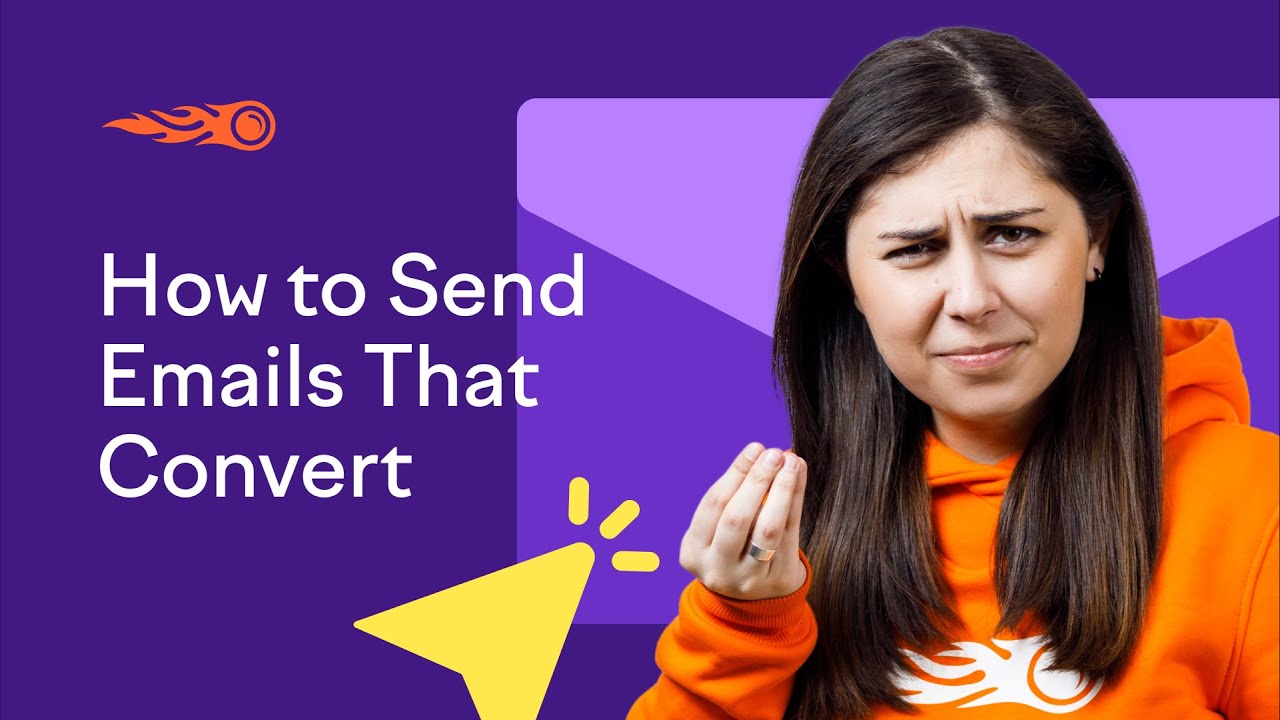
The Golden Rules of Outreach
To see success from your outreach efforts, there are a number of 'golden rules' that you need to follow. These are:
Quality Over Quantity
Focus your efforts on reaching out to those people who you can justify as potentially being interested in linking to your content. Do not take a 'spray and pray' approach and focus on sending to as many people as possible and hoping that someone will link.
Add Value
Your outreach should clearly demonstrate how your content adds value to the person that you are reaching out to and their audience. If you cannot do this, there is a good chance you should not be sending in the first place.
Clearly Communicate Your Request
If a recipient cannot clearly understand what it is that you are wanting them to do upon receiving your email, you need to make sure that this is communicated better.
Always be clear on what the action is that you are expecting the recipient to take.
Don't Spam!
It might sound like common sense, but if you cannot justify why you are sending an outreach to someone, consider not doing.
Why is Email Outreach an Important Part of Your Link Building Strategy?
Google's Webmaster Guidelines clearly state that:
The best way to get other sites to create high-quality, relevant links to yours is to create unique, relevant content that can naturally gain popularity in the Internet community. Creating good content pays off: Links are usually editorial votes given by choice, and the more useful content you have, the greater the chances someone else will find that content valuable to their readers and link to it.
But what anyone who is experienced in link building and SEO will tell you is that most businesses cannot adopt an approach of "build it, and they will come.", because they won't.
Very few brands and businesses are able to publish content and have it linked to by other people. They need to promote it, and outreach is how you can do that — getting your content in front of those who are able to amplify it, and giving them a choice to do so.
Simply by reaching out to a prospect and sharing your content, you are giving them a choice as to whether they link to it or not, and it is important to remember this throughout the process.
Email outreach, as a link building tactic, can be used alongside tactics such as:
Guest blogging Resource link building Broken link building Digital PRIt is a skill that can supercharge your link building efforts and help you to execute a solid strategy that drives success.
But we should also look at the benefits of using email outreach as a way to build links, with the main ones being:
The links earned with outreach will be totally editorial, meaning that they don't fall foul of Google's webmaster guidelines. It is a great way to proactively build links from topically relevant publications. It can scale up to help you to close a link gap with competitors. By using outreach in different ways, you can develop strategies that help you to build links from a new unique domain on an ongoing basis. It is an effective way to land top-tier PR coverage that drives brand awareness.To most SEOs, there is no other link building tactic that compares to email outreach.
Understanding Why Emails Often Go Ignored
Before we walk through a best-practice guide to sending outreach emails that earn links, let us take a quick look at why these are often ignored.
This is usually for a few reasons that include:
Sending to a prospect who has not been targeted correctly. They are not the right fit for your content and sending it to them is a waste of time. Your outreach email does not effectively communicate the value that your content could add to a reader or website visitor. You do not specify exactly the action that you want the recipient to take.Ask yourself, before sending an outreach email, what you would do if you received it. Would you be compelled to link to the content?
If the answer is no, you need to look at improving your approach.
A Best-Practice Guide to Sending Emails That Convert Bloggers and Journalists
We have already mentioned that outreach success comes from having a solid process to follow.
One that helps you to focus your efforts upon the end goal that you are trying to achieve, and that will help you to build the links that you need to gain a competitive SEO advantage.
So, where do you start?
Have Something Worth Sharing
If you want to earn great links with outreach, you need to have something worth linking to.
You often hear people talking about linkable assets. And, by default, we often think that this means blog content. But the best outreach strategies think outside the box and don't just do what everyone else is doing.
In fact, linkable assets can include:
People Tools Blog content Videos Interactive content Products KnowledgeAnd more.
You just need to have something that is worth sharing; otherwise, you will struggle to find and convince people to link to your website.
But as well as having something worth sharing, you need to ensure that you have something that is worth linking to, as you can have the best idea or pitch in the world, but if there is nothing to link to, you will find you are only credited with a brand mention for your efforts.
If you are sharing tips and insights from one of your experienced team members, as an example, go write a blog post about it that can be linked back to.
And while we are often quick to start producing new content, most businesses have at least something that already exists that deserves to be promoted and properly distributed. So go ahead and find it, and we will look at how to get this in front of the right people.
Setting Goals
You need to set goals for your outreach efforts so that you can measure how successful your approach is and continue to improve your processes to drive better results.
If you do not have a goal, how can you determine whether or not your resources were well spent? But the mistake that many make is that they use the number of links earned as a standalone goal.
That, let us say, could be "to earn links from 10 unique domains each month."
There is just one problem with this, and that is that this does not take into account the quality of the links you earn and the fact that not all links pass the same level of authority (something that you can learn more about in our guide to PageRank).
Setting goals for your outreach efforts should focus on more than just the number of links earned, with solid options being:
The authority of links (you can use Authority Score to determine this). The topical relevance of the links. Whether the domain already links to a competitor. The referral traffic that these links drive. The impact that these links have on your organic search rankings.Therefore, an example of a solid outreach goal could be "to earn quality and topically relevant links that increase organic visibility and close an identified link gap."
Be sure to set goals so that you can measure the impact and success of your efforts.
Identifying Outreach Prospects
If you want your outreach campaign to be successful, you need to make sure that you are sending your email to prospects who are likely to take action and be interested in what you have to offer.
And there are a few different ways to do this, depending upon the goal of your outreach and the specific tactics that you are using.
Backlink Gap Analysis
One of the quickest and easiest ways to build up a list of relevant outreach prospects is by digging into your competitor's link profile to understand who is linking to their site but not yours.
You can do this with the Backlink Gap tool.
Enter your domain, and your competitors' domain (you can find more websites to look at using Market Explorer) and select theirs from the 'Prospects for domain...' dropdown, and you will be presented with a list of links that point to your competitor's website but not yours.
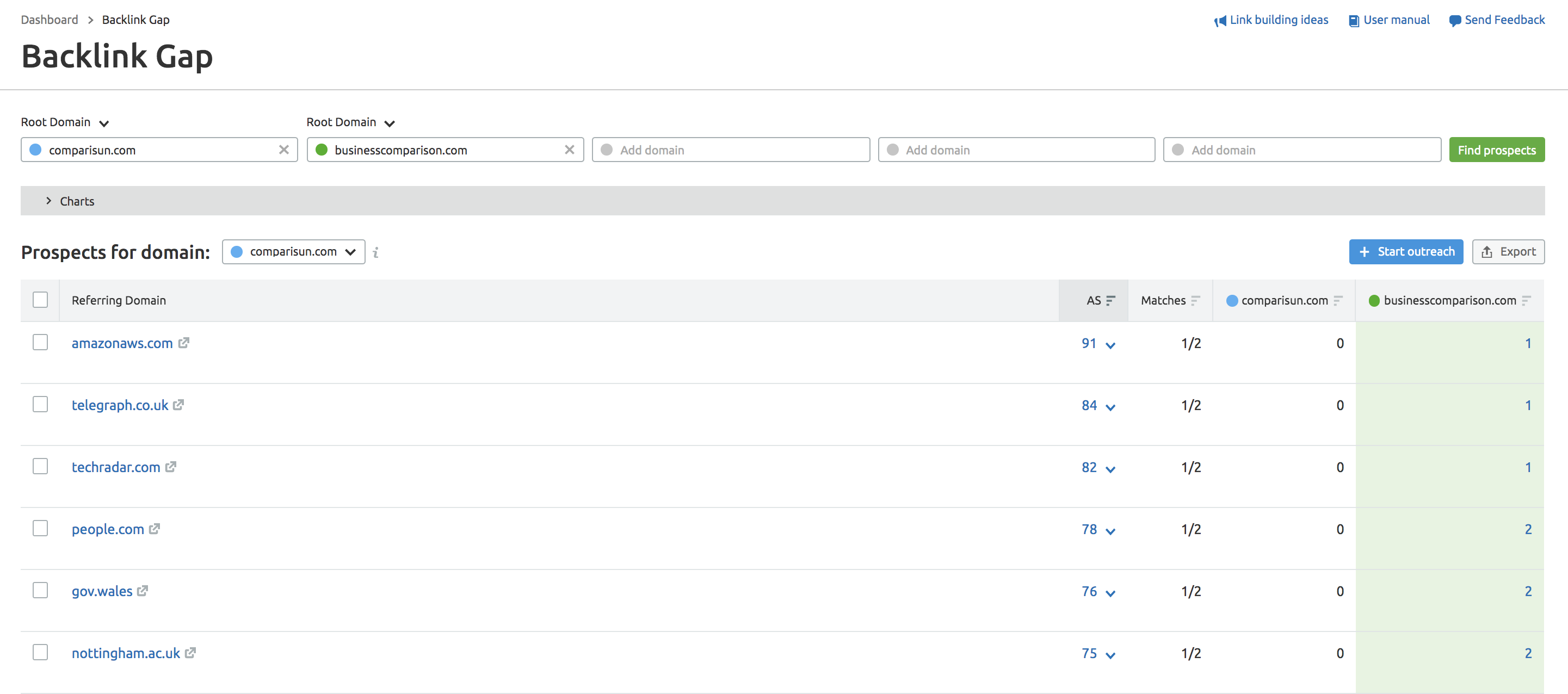
You can use these sites as a foundation for building your outreach list based on prospects who already link to your competitors.
Recent News Coverage
When it comes to developing a solid link building strategy, where you can truly gain a competitive advantage is by earning links from domains that your competitors do not have.
To find these prospects, you need to go and hunt down opportunities that they have not found. You can do this using Google News.
It is as simple as entering a keyword and filtering the results to show those from the past month.
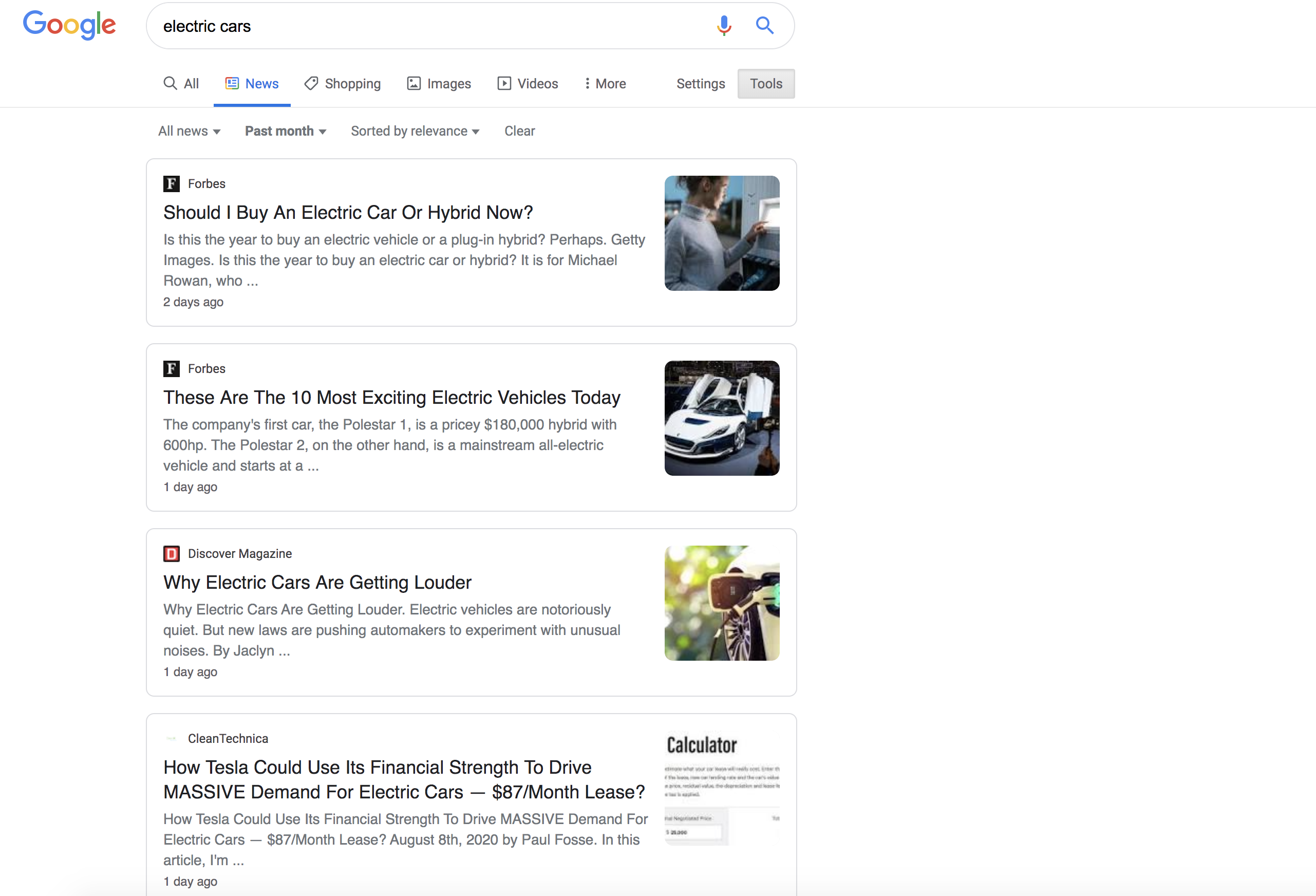
You can then add publications and journalists who have recently covered similar topics to your outreach list.
Google Search Operators
Are you using outreach to land guest blog post opportunities? If so, then one of the most effective ways that you can find these at scale is by using Google Search Operators.
These help you to refine your search on Google and find more targeted and relevant results, and the most basic operator that you can use is to search in the titles and URLs for the relevant keywords.
This is perfect for those looking to find relevant blogs that accept guest submissions.
Keyword 1 intitle:"write for us" inurl:"write-for-us"This Google Search Operator will search for results related to your keyword where they have a page that is looking for writers. It looks at the page title or the URL.
Just replace 'Keyword' with your target keyword and quickly find relevant opportunities.

Use a Media Database
If you have a budget available to invest, one of the easiest ways to find relevant prospects to outreach to is by using a media database such as Gorkana, Cision, Vuelio, or anewstip.
These are effective databases of journalists and bloggers that can be segmented by location or topic. Think of them as search engines for media contacts.
But you can expect your monthly investment into a platform like these to be $$$ per month, depending on which you choose to use.
That said, they can save a lot of time in helping you to find prospects, so be sure to balance the time that this can save against the cost.
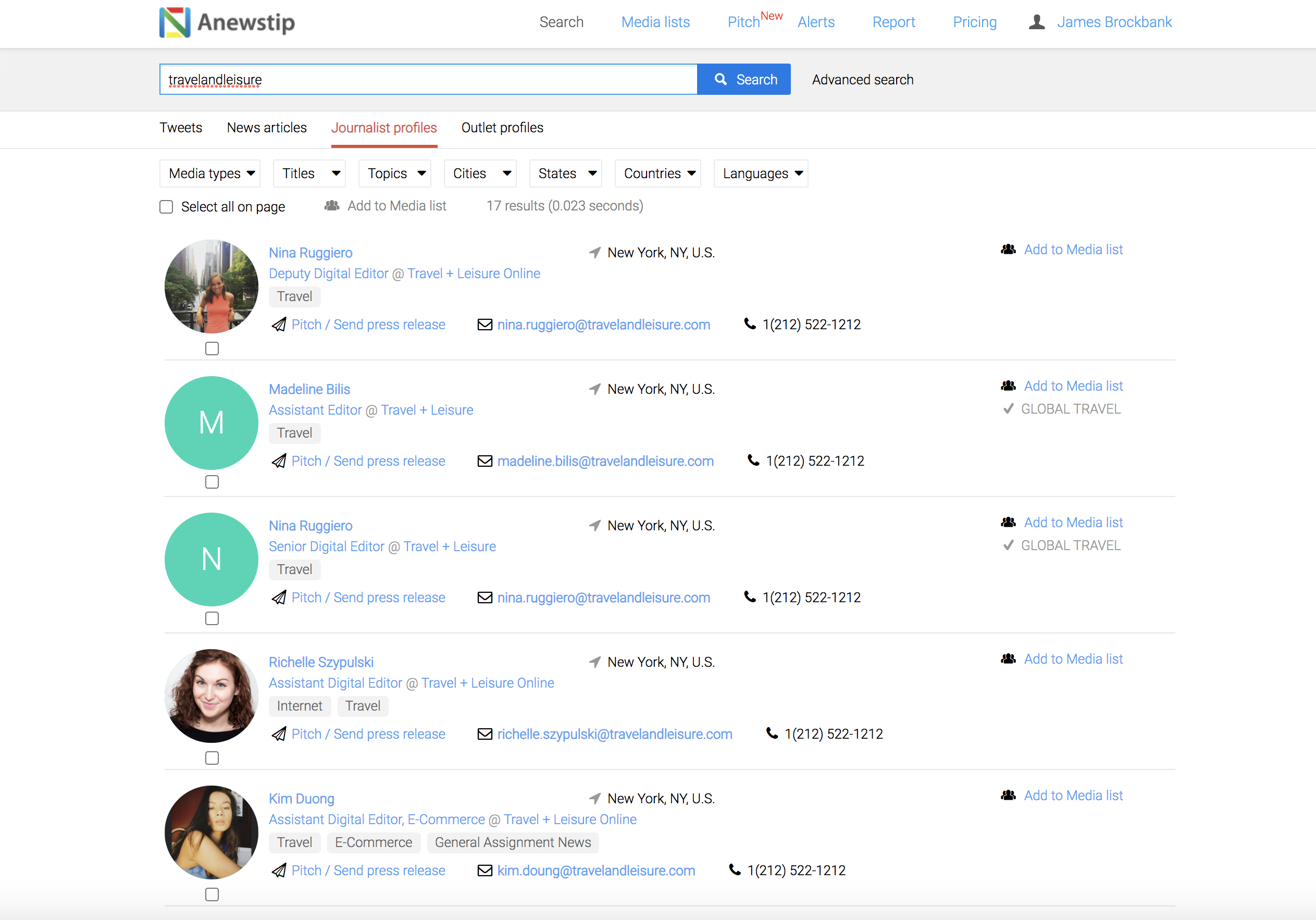
Use the Link Building Tool
Using the SEMrush link building tool can help you to find outreach prospects in minutes.
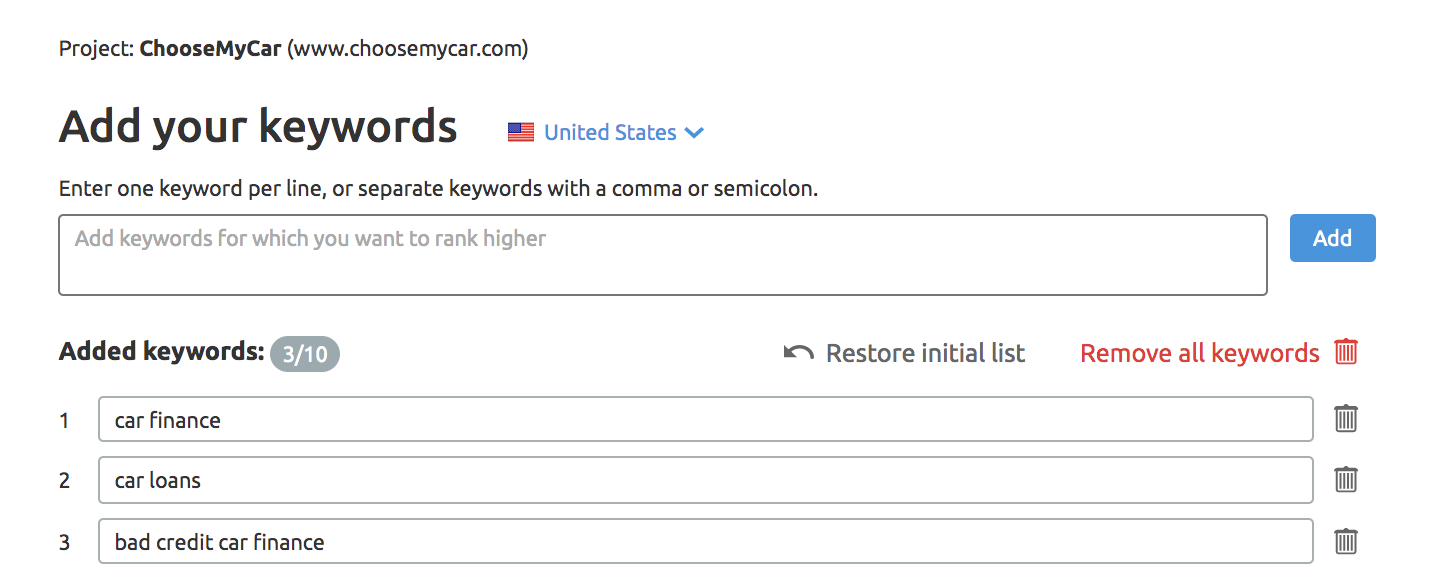
In fact, by entering just a few details around the keywords you are targeting, the tool will return a wealth of prospects for you to outreach to, saving further time and resources.
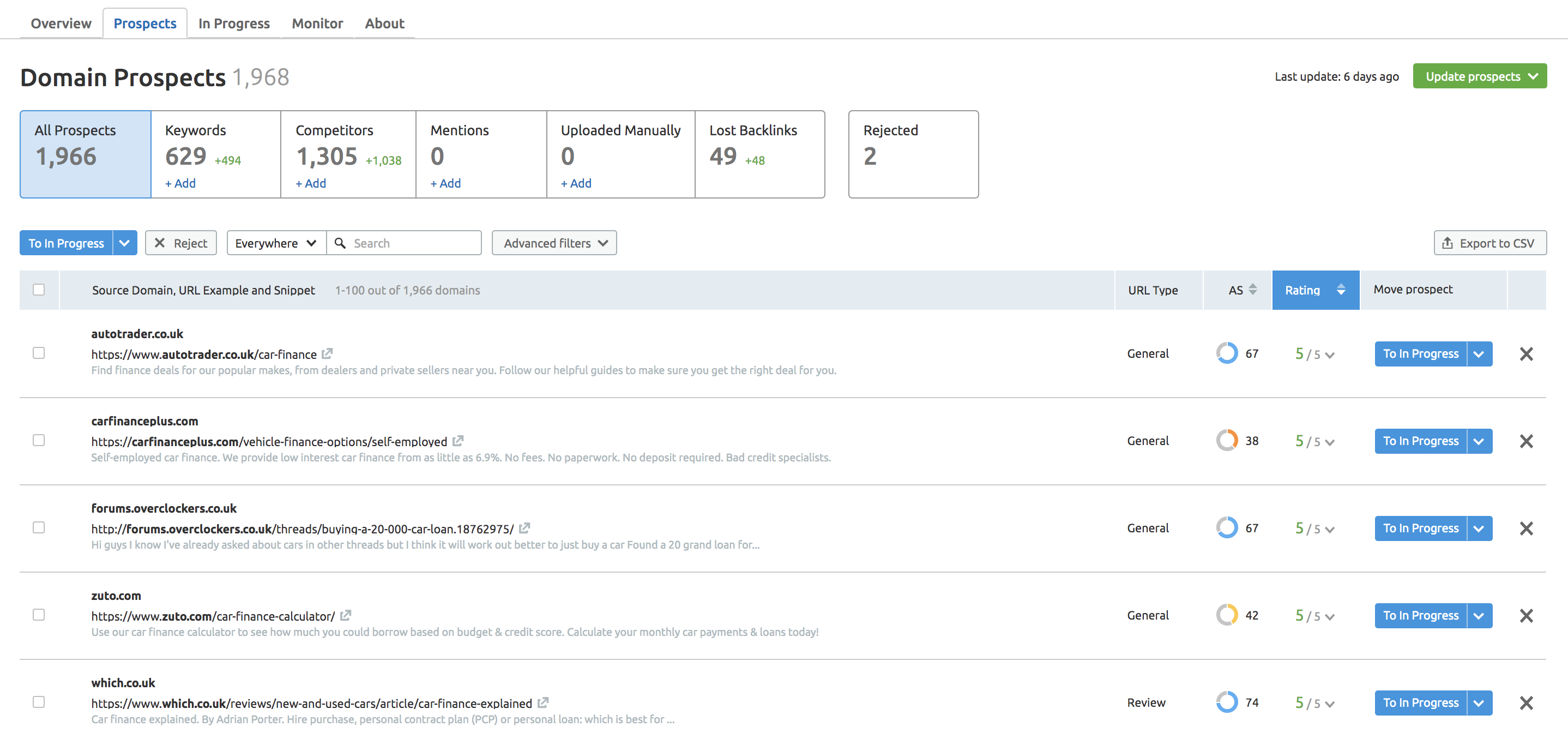
You can also use the tool to manage and monitor your progress, and we will look at that shortly.
Finding the Right Email Addresses
If you decide to invest in a media database, you will find that this will help you to get the right email address for your outreach prospects.
But if you do not use one, what are your options?
Firstly, try looking at a website's contact page, 'tip us' page, or 'write for us' page. You will often find that these include contact details, or a form, where you can send pitches to, such as this example from Rolling Stone:

Secondly, if you take a look at an article on a publication, you will often find a journalist's author profile linked. These will often include an email address, such as the ones on Business Insider.
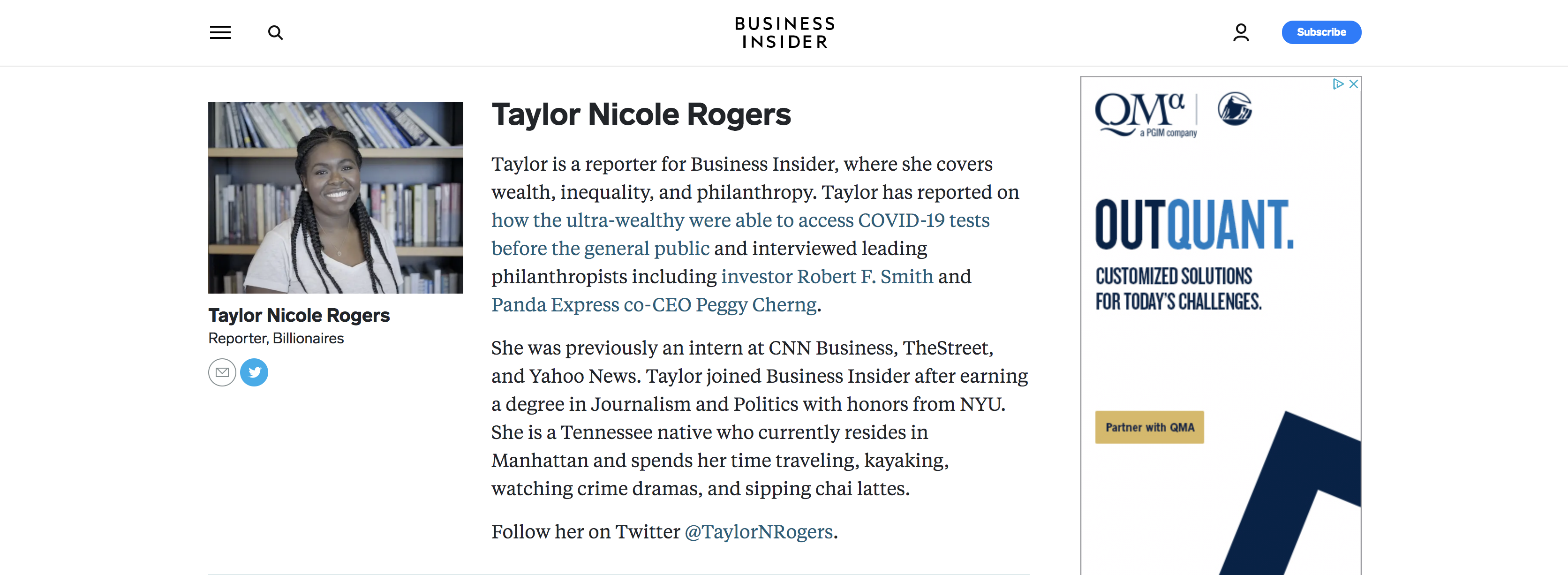
Failing that, we recommend that you try Hunter.io.
This tool that offers both free and paid plans, "lets you find email addresses in seconds and connect with the people that matter for your business."
Simply enter the domain name for the website that you want to find contact details for, and you will be provided with the most common email address pattern for those at the publication.
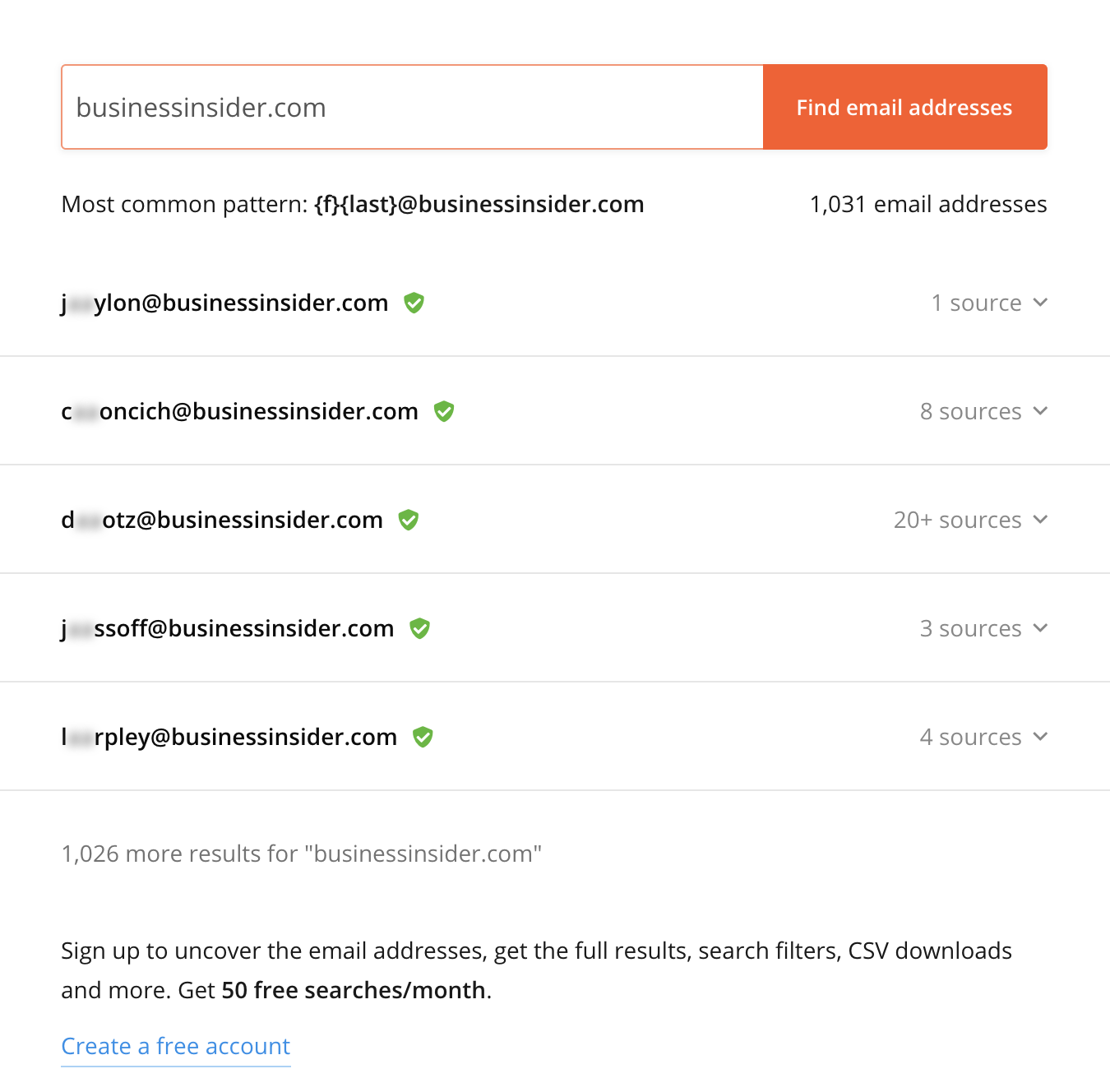
This can significantly speed up finding email addresses, as well as helping you to validate the accuracy of ones you found from third-party sites rather than a publication's own website.
The Importance of Subject Lines
The subject line of your outreach email is what entices a recipient to open it. And if no one is opening your emails, they are not going to see your outreach pitch.
If they are not reading your pitch, they will not see your content, which means that they are not going to link to it.
Subject lines matter. But too often, no thought goes into writing them.
But let us put some numbers behind this, to show an example of what improving your email's subject lines can do.
You send 200 outreach emails and get an open rate of just 25% because of a poorly written subject line. That is 50 opens.
Let us say a generous 20% of those then go on to click the link in your email to view your content. That is 10 clicks.
If 20% of the 10 link to your content, you obtained 2 links.
But if that open rate was 40%, and everything else the same, you would see 80 opens, 16 clicks and 3 links earned – the better the open rate, the better the return.
But what makes a good subject line?
According to HubSpot:
The best email subject lines are creative, compelling, and informative without giving too much away. A good subject line that piques interest is the difference between a prospect opening or ignoring an email.
An outreach email's subject line should make a recipient want to open your email to find out more. It is important that you focus on attention-grabbing headlines, and that means that things like emojis and numbers can help your email to be the one that stands out in a busy inbox.
Writing an Engaging Outreach Email
Once your outreach email has been opened, you need to have an engaging outreach email that convinces the recipient to take action.
Poorly written emails that do not evoke any sort of action are one of the most common reasons why outreach isn't successful.
And it makes absolute sense. After all, we are all short of time, and emails are often only skimmed at the best of times. So, it is important that the email pitches that you send do three things:
1. Clearly share what it is you are pitching, whether that is a story, a product, or even a replacement for a broken link. Make it clear early on in the email so that there is no confusion about what you are asking someone to read.
By doing this, you are allowing the recipient to quickly make a decision on whether or not to continue reading while having a good idea of what is coming.
2. Showcase why you are sending this outreach email to this person, given that everyone wants to feel that they have been carefully chosen and have not just been added to a mass-send list.
Justifying why you are sending the email, and why you believe the recipient will be interested, shows that you have done your homework.
3. Share the action that you want the person to take and do not leave them guessing. If you want them to cover your content in a news article they are writing, say that. Likewise, if you want a brand mention turned into a link, be clear.
You will find this far more effective than leaving someone guessing about what you want them to do.
But the good news is that you can often template some of your outreach emails, at least to a certain degree, to help speed up sending them. You will find a bunch of great examples in our guide to 7 Cold Email Templates to Boost Your Outreach.
Managing and Monitoring Outreach Progress
While there is nothing wrong with sending all of your outreach emails straight from your email client, this can make it hard to track the progress of each pitch.
And believe us when we say that tracking the status of every email you send is really important. You need to know what is working and what is not. And for that to happen, you need data around your success rate of email pitches.
You can use the SEMrush link building tool to manage and monitor your outreach progress.
And once you have added your prospects to your 'in progress' list, you will see these in your 'ready to contact' tab within the tool.
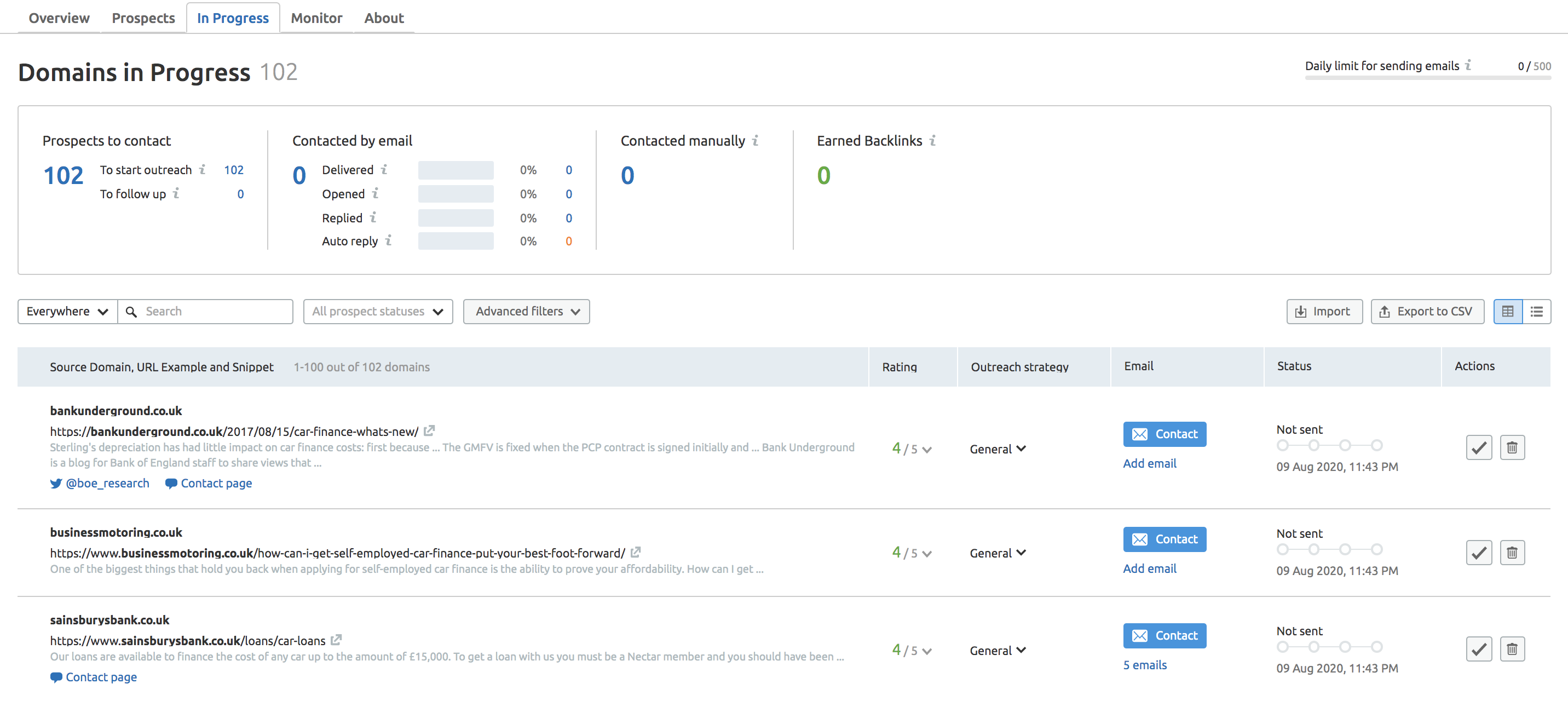
From here, once you have connected your email account, you can use the tool to send outreach emails and track their progress, making the whole process really easy to keep on top of and to easily analyze your results.
But the beauty of this tool is the flexibility that you have over your emails.
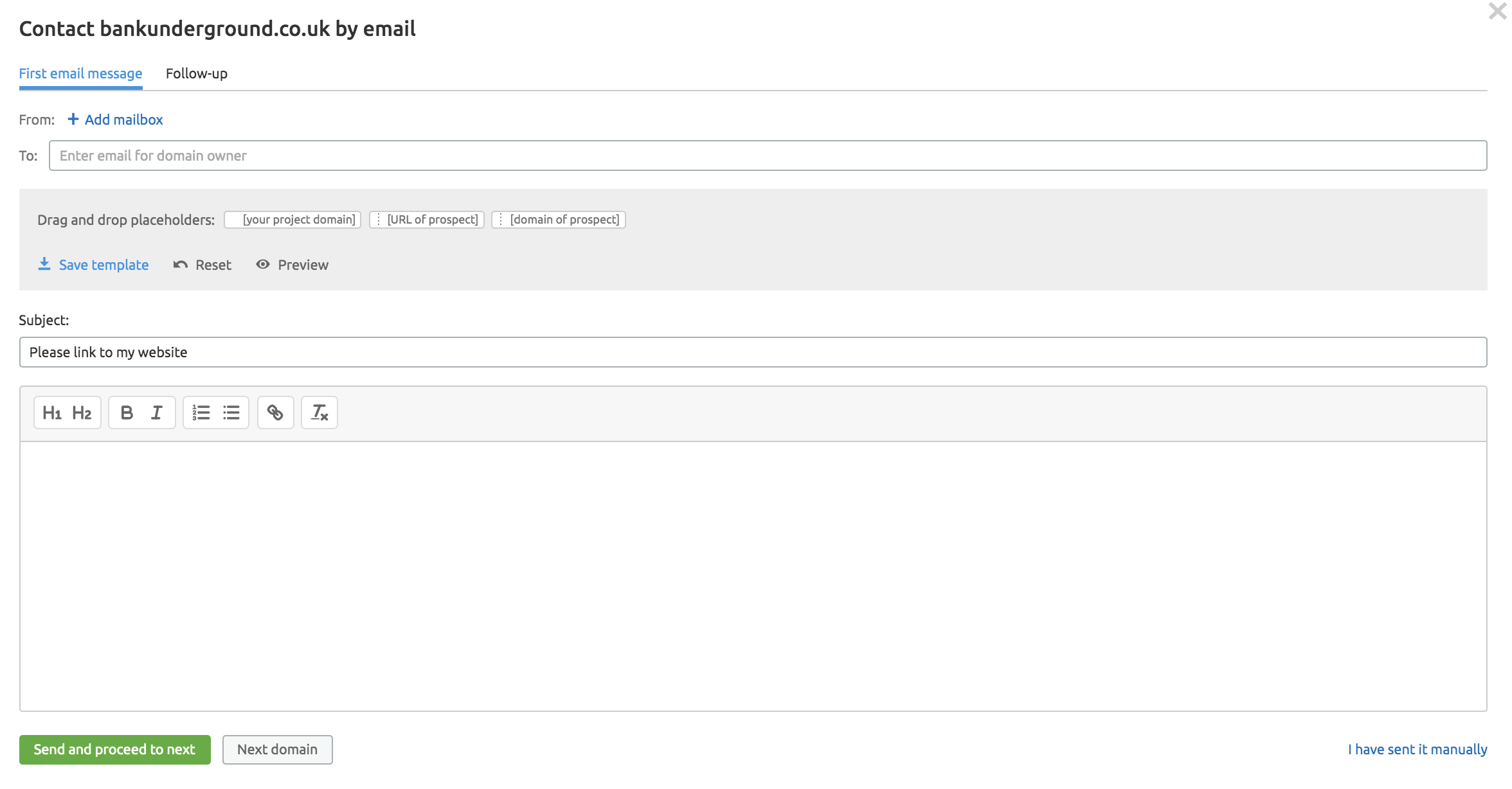
You have full control over who you send to, the ability to drag and drop placeholders, you can set your own subject line, and customize your entire email.
You can also mark any prospects that you have manually sent to.
Once you have sent these, you will find that they appear in the 'monitor' tab, and you can use this to keep updated with where each prospect is at, whether they have linked yet or need following up with.
Following Up on Outreach Emails
Last but not least, you need to make sure you are following up on outreach emails that you send if you have not had a reply.
Inboxes are busy places, and emails get missed.
The fact that someone has not responded to your email or linked to your site from your first email does not mean that they are not interested. It might just mean they haven't seen it, haven't had a chance to do anything with it, or simply got sidetracked.
For these reasons, we recommend following up at least once (but never more than twice) on your emails after approximately 3 days since your first send.
You can do this with the link building tool that you have just sent through, helping you to keep everything together in one place. To understand the industry's take on this, take a look at this thread on Twitter.
TWO-PART PR QUESTION: how many times do you follow up with a journalist, and how many responses result from your follow up(s)? #prrequest
— Jered Martin (@JmoMonk) May 26, 2020But think carefully about how you follow up.
Our recommendation is in the same email thread, 3 days later. Especially given that journalists are frequently seen on Twitter sharing examples where marketers essentially bombard them with contact.
Just a little note... It is never a good idea to send me a press release, then follow up with the same long email and links ONE DAY LATER in my Twitter DMs ?
— Lottie Gross (@lottiecgross) July 23, 2020You also do not need to re-send a full pitch.
A simple check-in will suffice.
Email outreach is perhaps the most effective tactic that you can use to earn quality links from relevant websites and drive a competitive SEO advantage.
You need to have a solid process in place that can easily be followed and scaled up. Do not try to cut corners, as you will only end up sacrificing the quality of your efforts, which never works.
Put in the time, really focus on adding value, and the results will come.
Innovative SEO services
SEO is a patience game; no secret there. We`ll work with you to develop a Search strategy focused on producing increased traffic rankings in as early as 3-months.
A proven Allinclusive. SEO services for measuring, executing, and optimizing for Search Engine success. We say what we do and do what we say.
Our company as Semrush Agency Partner has designed a search engine optimization service that is both ethical and result-driven. We use the latest tools, strategies, and trends to help you move up in the search engines for the right keywords to get noticed by the right audience.
Today, you can schedule a Discovery call with us about your company needs.
Source:





